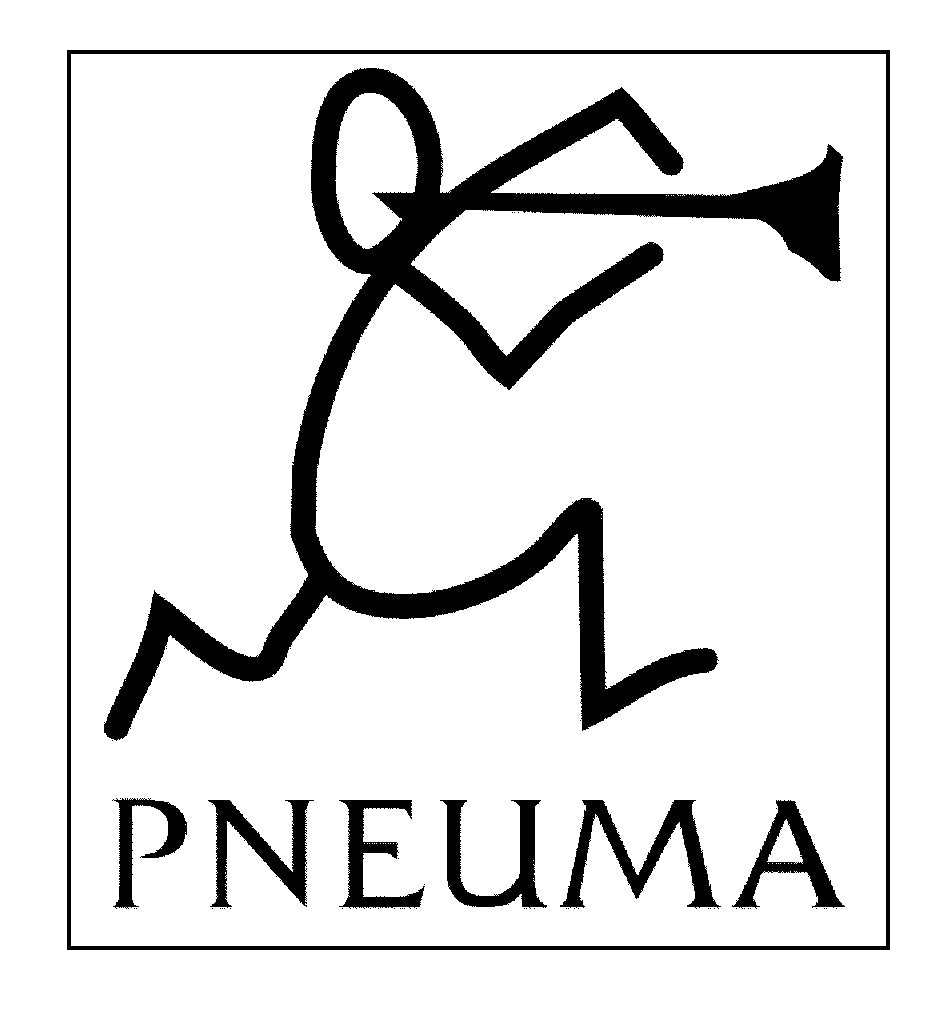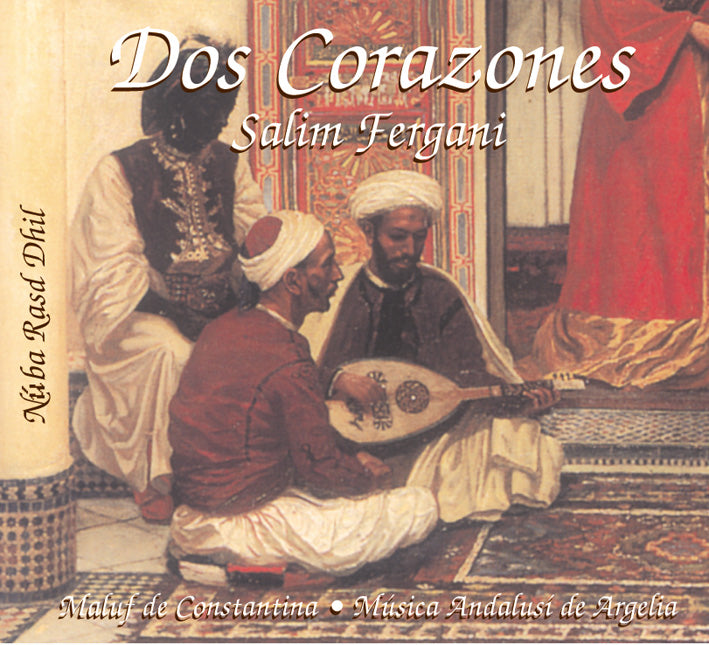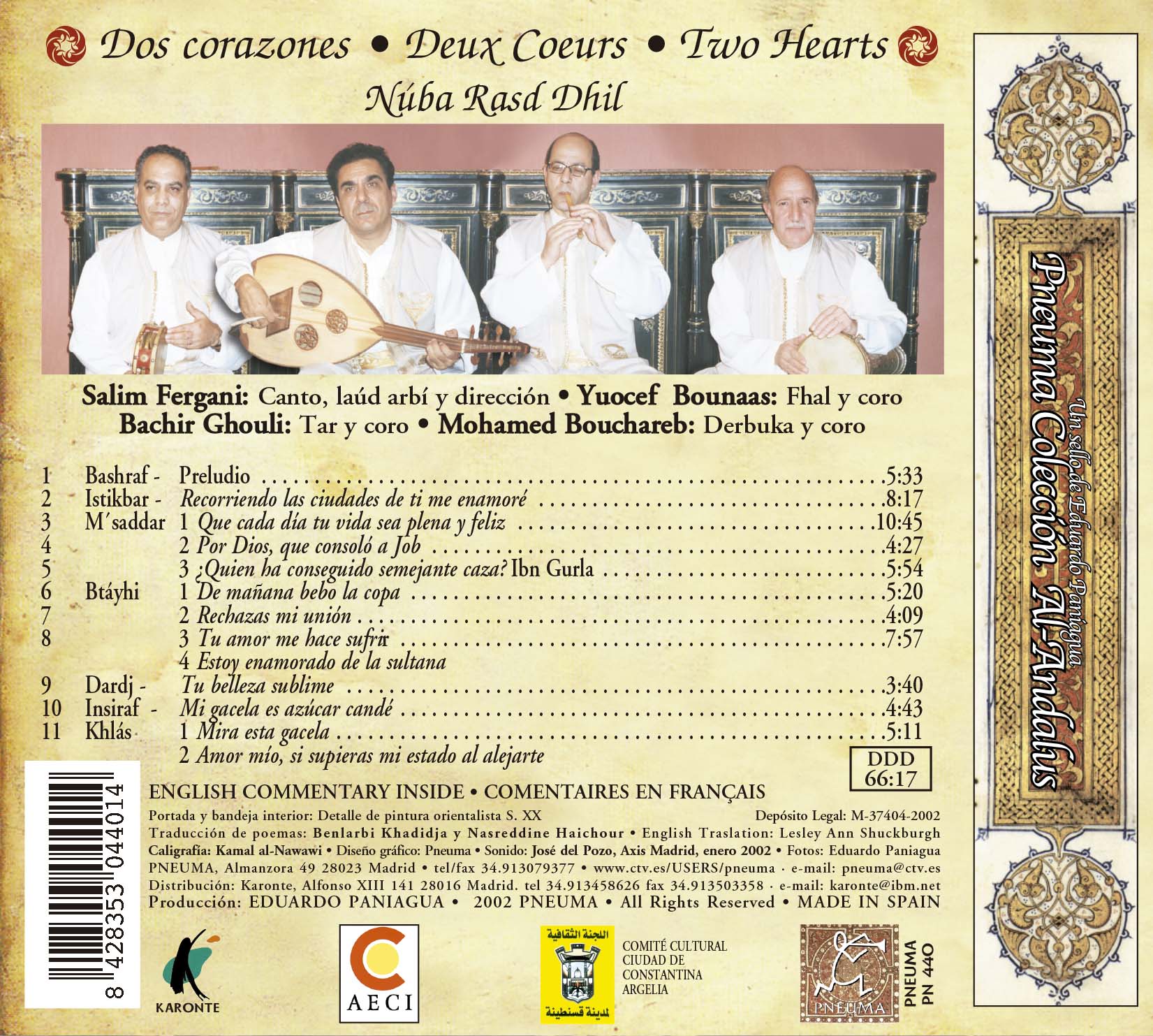pneumamusic
PN 440 DOS CORAZONES Núba Rasd Dhil
PN 440 DOS CORAZONES Núba Rasd Dhil
No se pudo cargar la disponibilidad de retiro
Índice
Índice
PN-440 DOS CORAZONES
Núba Rasd Dhil
Salim Fergani: Canto, laúd arbí y dirección
Yuocef Bounaas: Fhal y coro
Bachir Ghouli: Tar y coro
Mohamed Bouchareb: Derbuka y coro
1 Bashraf - Preludio 5:33
2 Istikbar - Recorriendo las ciudades de ti me enamoré 8:17
3 M´saddar. 1 Que cada día tu vida sea plena y feliz 10:45
4 2 Por Dios, que consoló a Job 4:27
5 3 ¿Quién ha conseguido semejante caza? Ibn Gurla 5:54
6 Btáyhi 1 De mañana bebo la copa 5:20
7 2 Rechazas mi unión 4:09
8 3 Tu amor me hace sufrir 7:57
4 Estoy enamorado de la sultana
9 Dardj - Tu belleza sublime 3:40
10 Insiraf - Mi gacela es azúcar candé 4:43
11 Khlás 1 Mira esta gacela 5:11
2 Amor mío, si supieras mi estado al alejarte
Sonido: José del Pozo, Axis Madrid, enero 2002
Traducción de poemas: Benlarbi Khadidja y Nasreddine Haichour
Producción: EDUARDO PANIAGUA 2002 PNEUMA
Descripción
Descripción
TRAS LAS HUELLAS DE ZYRIAB
“Si tuviera dos corazones, sobreviviría con uno y abandonaría el otro al sufrimiento por tu amor”
Cuerdas del laúd que parecen desgranar el tiempo, una pandereta y un tambor que vuelan sobre los antiguos ritmos, una flauta mágica (fhal), una voz que surge allende un puente alado en una canción al amor, a la belleza y al merecido recuerdo de un encuentro en lo más profundo de la Andalucía islámica.
Recuerdos de Zyriab, que abandonó despechado el Oriente, enemistado con su maestro Ishaq el-Mawsili. Su llegada a la corte de Córdoba como cortesano árbitro de las costumbres, le transformó en continuo innovador y genial creador. Su pasión por la música hizo que transformara su laúd de cuatro cuerdas, hasta entonces modelo de los temperamentos humanos, añadiendo la quinta cuerda símbolo de búsqueda y superación. Después vendrá el tiempo de la reflexión, de la sedimentación sosegada sobre el camino abierto por Zyriab a la música con el “tab”, el modo en relación con los temperamentos y el “wazn”, la medida y el ritmo, bases del espíritu en el que se deben interpretar las núbas. Con estas herramientas nace la música andalusí, nombre que se da a la herencia de su creación desde entonces hasta nuestros días.
Los siglos pasaron y la música andalusí fue a parar a otros lugares, desterrada de Al-Andalus, encaminada a los benignos horizontes del Magreb, en Marruecos, Argelia, Túnez y Libia. Las melodías de Córdoba, Sevilla o Granada se fundieron con las de Fez, Meknes, Ifriquiya, Tlemcen, Argel y Constantina. Las escuelas musicales renacieron constituyendo formas poéticas y textos específicos de cada región. La escuela de Constantina, cercana a la inspiración de Túnez y Libia, se denominó “herencia antigua o maluf”. Con inusual deseo de perfección el maluf es practicado en círculos de iniciados de la “Ciudad de los puentes”, como se titula Constantina. Numerosos cantores e instrumentistas animaron largas veladas al calor del verano. Chaklab, Leyris y otros maestros, con religiosa entrega cantaron en ellas nostálgicos preludios (istikbar). Recientemente Mohammed Tahar Fergani ha sido su máxima figura, antes de la aparición de una tendencia “renovadora” que ha jugado un papel popularizador de esta milenaria música hasta entonces reservada a espacios cultos. Hoy día brilla con luz propia su hijo Salim Fergani, añadiendo a la maestría del canto la interpretación del laúd, sobre el que expone la profundidad de los poemas del repertorio de Constantina y de Argel.
LA MÚSICA ANDALUSÍ DE ARGELIA
“Las canciones de la núba Rasd Dhil acunan un corazón dolorido y sosiegan sus pesares”
Existen tres escuelas en la tradición andalusí de Argelia ligadas a las ciudades de Tlemcen, Argel y Constantina. El repertorio de Tlemcen se denomina garnati, el de Argel san´a y el de Constantina maluf.
El maluf está marcado por la influencia beduina y guarda una originalidad propia. En Argelia existen en la actualidad 12 núbas completas (colecciones de canciones sobre un modo específico que le da su nombre). La núba clásica de Constantina tiene una estructura interna con particularidades respecto a las otras escuelas. Comienza por una introducción instrumental bashraf, que continúa con una forma libre vocal istikbar, intercalada de respuestas solistas instrumentales. Esta parte se considera la esencia de la núba ya que expone la escala del modo e introduce el espíritu anímico del mismo. Se inicia la sucesión de canciones con el ritmo lento y ceremonioso llamado m´saddar, que exige gran maestría al interprete. El btáyhi recorre la segunda serie de canciones, ahora menos solemnes, incluyendo poesía popular propia del Este argelino. El dardj introduce un tiempo más rápido. El insiraf continúa intensificando el tiempo, cambiando a ritmo ternario. Por último, el khlás, también de ritmo ternario, es más ligero y ágil, invitando a la danza.
LA NÚBA RASD DHIL
“Constantina es el crisol del tiempo respecto al género musical Maluf”
Los fragmentos escogidos para esta grabación constituyen lo esencial de la núba Rasd Dhil. El contenido poético describe la naturaleza, el amor en su más humana condición, la belleza, la adoración a Dios y los elogios al Profeta.
Salim Fergani, bajo su búsqueda e investigación, ha incluido dentro de lo marcado por la tradición, por vez primera, el ritmo dardj en esta núba de forma muy valorada por los melómanos.
La núba Rasd Dhil nos sumerge en el ensueño de un futuro de alegría. Por sus poemas y sus alegres melodías que deleitan los sentidos, se considera una de las obras que caracterizan la escuela de Constantina. En general se canta en las primeras horas de la mañana. El modo de esta núba era el preferido del califa Harum al Rashid.
Salim Fergani interpreta estas canciones haciendo vibrar las cuerdas de su laúd en una celestial armonía y una emoción revelada. Despierta en nosotros el soplo del alma con una sensación de eternidad vivificante. Deslumbrado por la blanca gacela de embelesadora belleza, se regocija en el dulce abrazo y la purpúrea copa. La bella y esbelta figura que aparece en sus primeros poemas, hechicera de soñadores ojos, no es otra que la grandiosa obra de la núba, interpretada en una alborada subyugante.
SALIM FERGANI
Salim Fergani proviene de una familia de artesanos y músicos. Su abuelo Hammou Fergani (1884-1972) fue maestro del hawzi. Salim nació justo antes de la trágica guerra de Argelia. En este duro medio social, desde los cinco años de edad aprendió de sus antecesores las maravillosos secretos del maluf. Su padre El Hadj Mohammed Tahar Fergani fue su primer maestro y su tío Zonaoui le introdujo el la interpretación del laúd ‘arbí. Con estos elementos Salim ha logrado una nueva sensibilidad de interpretación de los antiguos poemas ejecutados en las tradicionales melodías del maluf, consiguiendo su propio estilo y personalidad. Giras por todo el mundo, gracias al apoyo del laudista Marc Loopyut, le han dado una dimensión internacional y el apodo de “El trovador de Constantina”.
Salim interpreta magistralmente todos los géneros tradicionales del canto: maluf, zedjel, hawzi, mahjouz, aroubi, quadriates. Pero sin duda por su autenticidad es el maluf su género predilecto.
Mouloud Bensaid (Presidente de la Comisión Cultural de la Municipalidad de Constantina). Extractos traducidos por Eduardo Paniagua.
-----------------------------------------------------------------------------------------------------
DEUX COEURS • NÚBA RASD DHIL
SUR LES TRACES DE ZYRIAB
“Si j’avais deux cœurs, j’aurai pu survivre, mais possédant un cœur pris de passion”
Des cordes qui semblent égrener le temps, un tambourin qui s´envole en des rythmes antiques, un f´hal (flûte) magique, une voix qui sélève au-delà d´un pont ailé dans un prélude à l´amour, à la beauté et c´est le juste souvenir d´une rencontre séculaire au creux de l´Andalousie.
Souvenances de Zyriab, quittant l´Arabie de dépit, brouillé avec cet autre musicien Ishak El Mawcili. Son arrivée à la cour de l´époque, son statut de courtisan, désormais, qui se transformera très vite en celui d´un créateur, d´un innovateur acharné. Une passion alliée à des traits de génie qui lui feront ajouter une cinquième corde à un instrument de prédilection l´oûd, le luth dont les quatre boyaux représentaient les divers tempéraments humains jusque là. Puis viendra le temps de la réflexion, des balises posées sur le chemins pris par la musique andalouse, comme on la dénomme encore de nos jours. Les deux principes fondamentaux chevilles sur lesquelles viendront s´articuler toutes les noubas á venir: le “tabaa” le mode en réference au tempérament, l´esprit dans lequel peut s´exécuter une pièce musicale, et le “wazn”, la mesure.
Des siècles se passeront et qui aboutiront en d´autres départs précipités vers d´autres horizons plus cléments, vers le côtes du Maghreb, le Maroc, l´Algérie, la Tunisie, la Libye. Les mélodies de Cordoue, de Séville ou de Grenade se fondront alors dans les mélopées de Fès, de Meknès, de Tunis, de Tlemcen, d´Alger ou de Constantine. Des écoles naîtront, l´école Constantinoise, notamment, qui construiront des formes poétiques, des textes particuliers à cette région dont les inspirations se tourneront parfois vers la Tunisie ou la Libye, avec cependant, cet inusable désir de parfaire “l´héritage des anciens”, dans la ville aux arches multiples, le Malouf ce sera son appellation, se pratiquera en cercles d´initiés, de “Fennanine”. Des nombreux artistes, interprètes, instrumentistes émergeront, animeront des milliers de soirées dans le chaleur des étés de l´Est.
Cheikh Chaklab, Cheikh Leyris et d´autres, toutes confessions religieuses confondues s´adonneront sans répit aux douceurs des Istikhbar nostalgiques. Ceci, avant l´apparition d´une nouvelle tendance qualifiable de “rénovatrice” tant elle jouera un rôle de popularisation d´une musique en passe, en ces temps, de se confiner en des espaces réduits. Mohammed Tahar Fergani en sera le ténor, indiscutable et indiscuté, relayé aujourd´hui par son fils Salim, à la voix acquise en des techniques éprouvées et une maîtrise de l´oûd évidente auxquelles vient se joindre une recherche approfondie en des textes du répertoires Constantinois et même Algérois (sanaâ).
BIOGRAPHIE
“Constantine à de tous temps constitué un creuset en matière de Malouf”
De part son appartenance à une famille, une lignée d´artisants et de musiciens avec en référence son grand-père Hammou Fergani, maître du hawzi (1884-1972), dont l´enracinement artistique existe pendant plus d´un siècle, Salim Fergani représente unr sensibilité nouvelle en terme d´interprétation de textes anciens ou d´exécution de pièces authentiques du Malouf.
Né juste avant les événements tragiques de la guerre d´Algérie, Salim, malgré un environnement social, très difficile, à connu les bienfaits du Malouf déjà à l´âge de 5 ans où il interpréta son premier morceau.
Son père El-Hadj Mohammed Tahar Fergani à joué un rôle prépondérant dans sa formation. Etant son premier maître, il lui appris à interpréter le Malouf. Son oncle Zouaoui lui a posé les premiers jalons dans la manière de jouer au luth arabe. Influencé par ces deux personalités, Salim s´est crée son genre, son cachet.
Ses tournées à travers le monde sont en fait, le fruit d´un travail de longue haleine relayé par le professeur Marc Loopyut, qui a su donner à l´artiste sa vocation réelle de “troubadour de Constantine” à la dimension internationale.
Salim excelle dans l´interprétation de tous les genres de chants. Ainsi le Malouf, le Zedjel, le Hawzi, le Mahjouz, le Aroubi, les Quadriates sont autant de formes magistralement exécutées par l´artiste. Le Malouf reste, cependant, sa musique de prédilection “c´est pour son authenticité” me confit-il.
NOUBA RASD DHIL
Les morceaux choisis pour cet enregistrement constituent l´essentiel de la Nouba plus représentative de l´école de Constantine. Un ensemble de textes chantés dans des mesures différentes allant de M´saddar, première mesure, au Khlás, mesure finale, en passant par le Btáyhi, le Dardj plus vif et enfin l´Insiraf. Les thèmes sont liés à la description de la nature, à l´amour dans sa signification la plus humaine, à la beauté, à la véneration de Dieu, aux louanges du Prophete.
Il est á signaler que Salim, avec un sens aiguisé de la recherche, a su pour la première fois introduire la mesure de Dardj pour le nouba; un Idjtihad très apprécié dans les milieux melomanes.
Mouloud Bensaid. Président de la Commision Culturelle Educative et Sportive Municipalité de Constantine
-------------------------------------------------------------------------------------------------
TWO HEART • NÚBA RASD DHIL
RETRACING THE STEPS OF ZYRIAB
“If I had two hearts, I would live with one and abandon the other to the suffering
your love brings me”
Lute strings that seem to finger the beads of time, a tambourine and a drum that hover over ancient rhythms, a magic flute (fhal), a voice that emerges beyond the winged bridge in a song to love, to beauty and to the memory of a meeting in deepest Islamic Andalusia.
Memories of Zyriab, who left the Orient in anger, the enemy of his master Ishaq elMawsili. His arrival at the court of Cordoba as courtier and arbiter of customs transformed him into an innovator and creative genius. Through his passion for music he restructured his four- stringed lute, until then the reflection of the human temperaments, adding the fifth string as a symbol of search and accomplishment. Later would come the time for reflection and the calm understanding of Zyriab’s path to music with the “tab”, the mode in relation to the temperaments and the “wazn” or time and rhythm, bases for the spirit in which the núbas should be played. The legacy of this creation is with us today, in the form of Andalusí music.
The centuries passed and Andalusí music found its way to the welcoming horizons of North Africa in Morocco, Algeria, Tunisia and Libya having been banished from Al-Andalus. Thus the melodies of Cordoba, Seville or Granada melted with those of Fez, Meknes, Ifriquiya, Tlemcen, Algiers and Constantine. The musical schools were re-born with poetic forms and texts specific to each region. The Constantine school, which was similar to the Tunisian and Libyan schools, was known as “ancient heritage or maluf ”. Maluf is played paying particular attention to perfection in circles of connoisseurs in the “City of bridges”, as Constantine is known. Numerous singers and instrumentalists entertained at long parties in the summer heat. Chaklab, Leyris and other masters, sang nostalgic preludes (istikbar) with religious devotion. Recently Mohammed Tahar Fergani has been the greatest exponent of this genre, before the appearance of a “renovating” trend that has popularised this thousand year old music previously reserved for places of culture. Today his son Salim Fergani shines with his own light, adding the lute to the mastery of the chant, on which he exposes the depth of the poems from the repertoire of Constantine and Algiers.
ANDALUSI MUSIC IN ALGERIA
“The songs of the Rasd Dhil núba cradle a damaged heart and soothe its pains”
The cities of Tlemcen, Algiers and Constantine are homes to the three schools of the Andalusí tradition in Algeria. The repertoire is known as garnati in Tlemcen, as saná in Algiers and maluf in Constantine.
Maluf has a strong Bedouin influence and maintains its own originality. In Algeria there are now 12 complete núbas (collections of songs using a specific mode that lends them its name). The classic núba from Constantine has its own peculiar internal structure in comparison to the other schools. It starts with a bashraf instrumental introduction that continues with a free vocal istikbar form and is interspersed with replies from the solo instruments. This part is considered to be the essence of the núba as it establishes the scale of the mode and introduces the mood. The succession of songs starts with a slow, ceremonious rhythm known as m’saddar, which requires great skill on the part of the musician. The btáyhi runs through the second series of songs, which becomes less solemn and includes popular poetry from the east of Algeria. The dardj introduces a faster rhythm which continues to increase in the insiraf, changing to a triple time. Finally, the khlás, also in triple time, is lighter and more agile, more like a dance.
THE RASD DHIL NÚBA
“Constantine is the crucible of time for the maluf musical genre”
The fragments chosen for this recording make up the essence of the Rasd Dhil núba. The poetic content describes nature, love in its most human condition, beauty, adoration of God and the praises of the Prophet.
Salim Fergani’s research has led to the inclusion of the dardj rhythm for the first time in this highly esteemed núba, within the framework of the tradition. The Rasd Dhil núba immerses us in the dream of a future of happiness. Its poems and happy melodies that delight the senses make it characteristic of the works from the Constantine school. In general it is sung early in the morning. The mode used in this núba was the favourite of the Caliph Harum al Rashid.
In these songs the strings on Salim Fergani’s lute vibrate in celestial harmony and revealing emotion. He awakens the breath of the soul with a sensation of revitalising eternity. Blinded by the white gazelle of bewitching beauty, we rejoice in the sweet embrace and the purple goblet. The beautiful, slim figure that appears in his first poems, the sorceress with dreamy eyes, is none other than the grandiose work of the núba, played in a captivating dawn.
SALIM FERGANI
Salim Fergani comes from a family of craftsmen and musicians. His grandfather Hammou Fergani (1884-1972) was master of the hawzi. Salim was born just before the tragic war in Algeria. In this difficult social environment he has learnt the marvellous secrets of the Maluf from his predecessors from the age of 5. His father El Hadj Mohammed Tahar Fergani was his first master and his uncle Zonaoui introduced him to the arbí lute. This background has helped Salim become more sensitive to the way the ancient poems are played to the traditional melodies of the Maluf, creating his own style and personality. World tours, thanks to the support of the lutenist Marc Loopyut, have given him an international dimension and the nickname “The Troubadour of Constantine”.
Salim masters all the traditional genres of chant: maluf, zedjel, hawzi, mahjouz, aroubi, quadriates. But without a doubt the authenticity of the Maluf makes it his favourite.
Mouloud Bensaid (President of the Cultural Commission of the Municipality of Constantine). Extracts translated into Spanish by Eduardo Paniagua.
Compartir
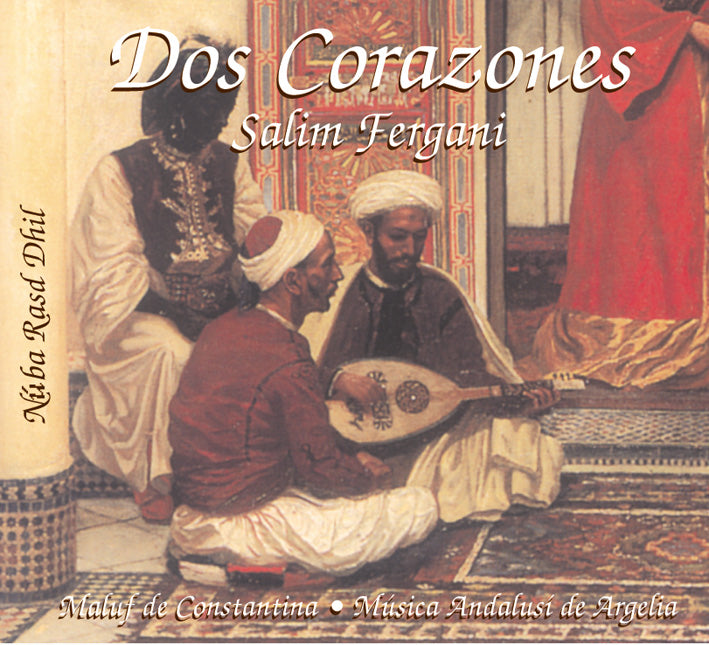
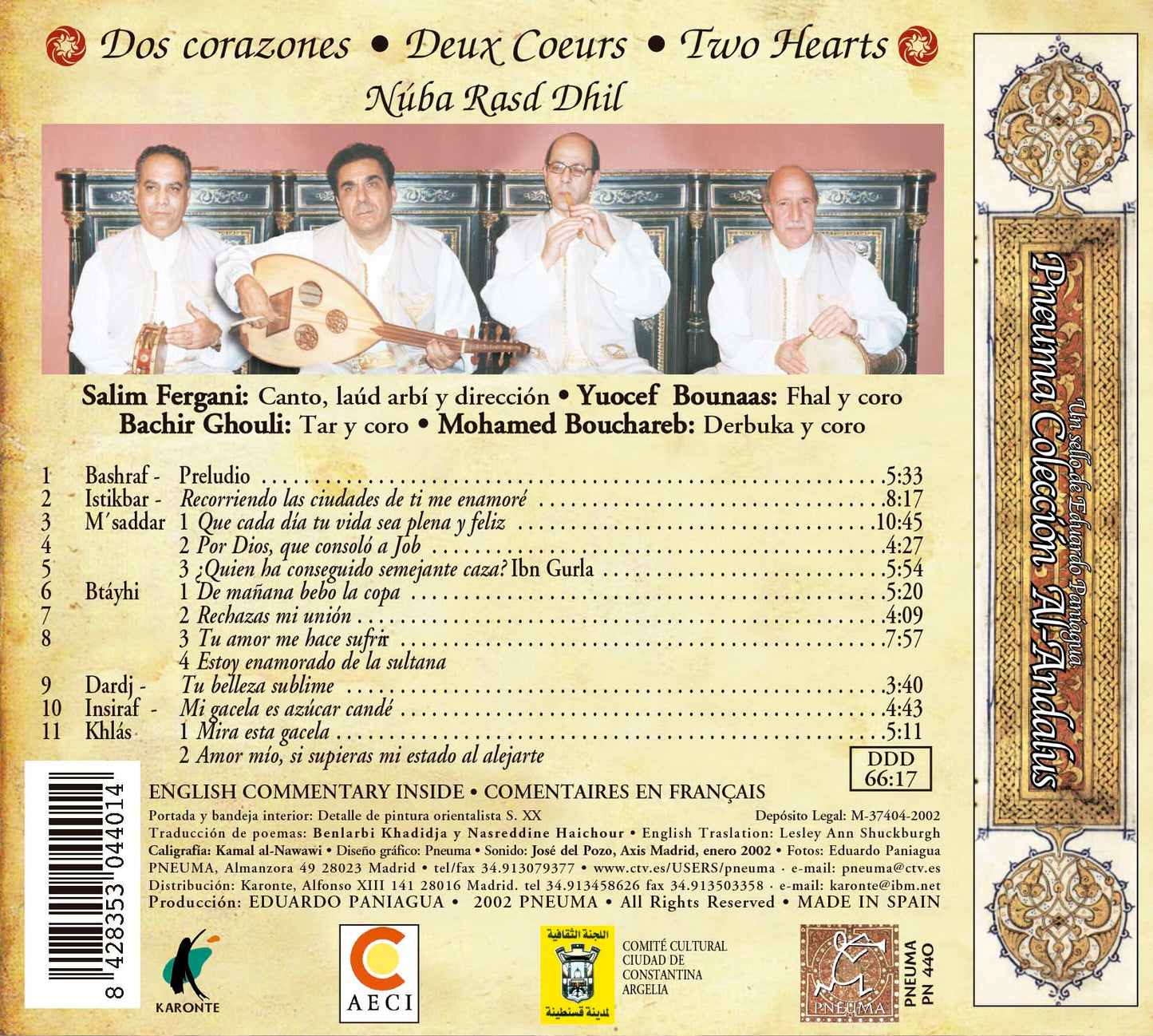
-
Envío gratis en pedidos mayores a 50 €.
Entrega en 5-7 días laborables para pedidos en España, en el caso de envíos fuera de España el tiempo de envío podría ser algo mayor.
-
Todo el trabajo de Pneuma Music se ha realizado en España.
Música medieval española inédita hasta el momento. Sus discos, con formato Digipack de cubierta de cartón y libreto interior (bilingüe + idioma original), quieren acercarse a una obra de arte total.
